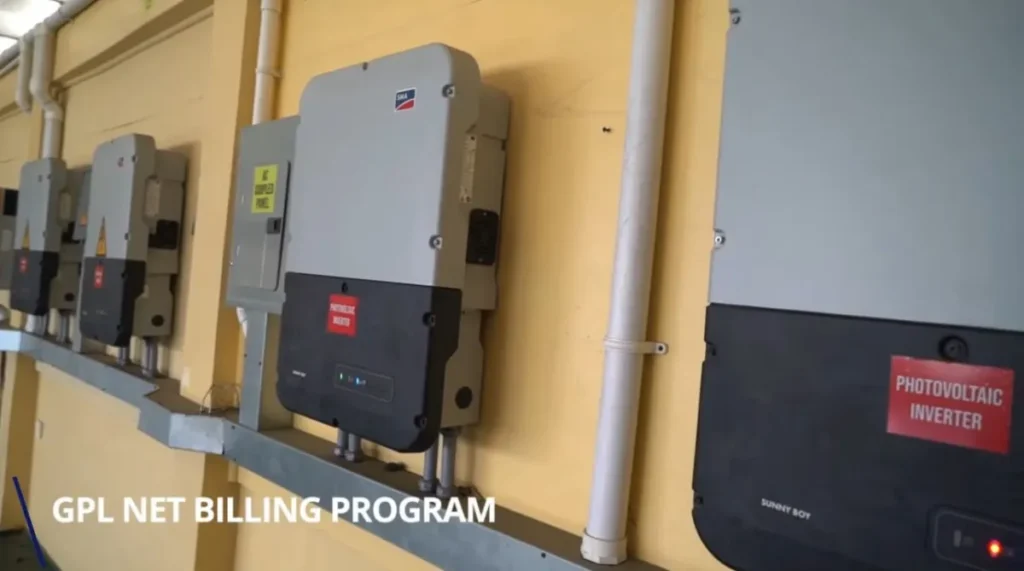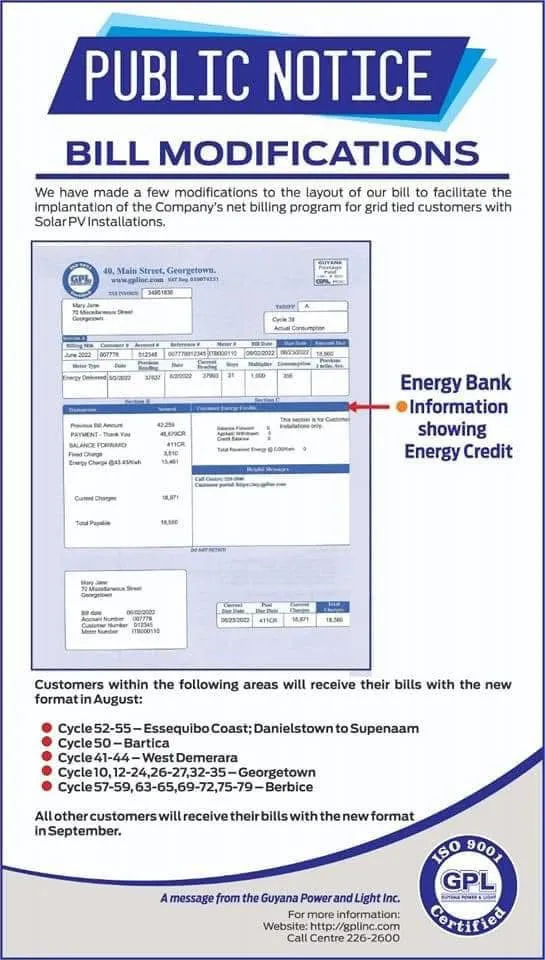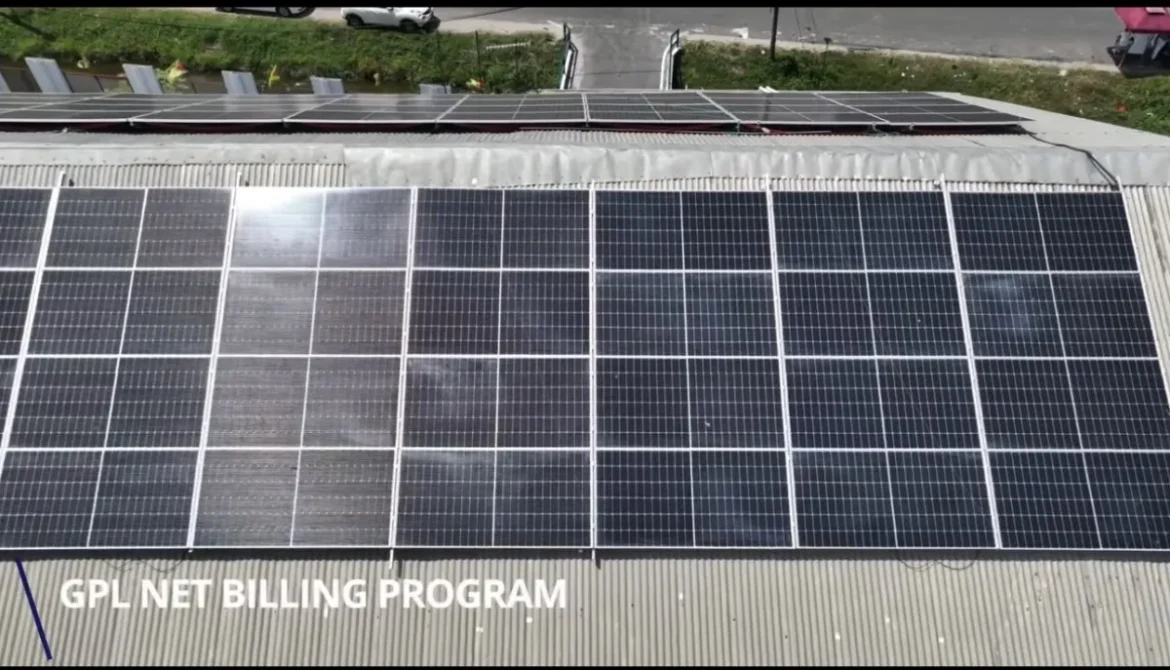— Government continues to invest in initiatives to expand access to reliable, sustainable energy
To accelerate the transition to renewable energy and achieve Guyana’s low-carbon development goals, the Government of Guyana continues to invest in several initiatives. These national efforts aim to diversify the energy sector while expanding access to affordable, reliable, and sustainable energy across the country.
A major initiative benefitting citizens is the Grid-tied and Net-Billing Programme. This initiative empowers households and institutions to install and use rooftop solar photovoltaic (PV) technology to meet their energy needs, reduce utility costs, and contribute to a more resilient and sustainable energy future.
It is spearheaded by the Guyana Power and Light Incorporated (GPL Inc.) and implemented nationwide in collaboration with the Guyana Energy Agency (GEA). Since the initiative was launched, GPL and GEA have been working closely as government stakeholders to advance grid-tie solar PV opportunities in Guyana and promote the adoption of renewable energy technologies and sustainable solutions.
It is important to raise consumer awareness of these initiatives so they can understand the specific requirements for safe and effective installations, adopt the necessary measures to benefit from the Grid-tied and Net-Billing Programme and support the country’s transition to renewable energy.

Grid-tied Solar PV and Net-Billing Programme
Grid-tied systems integrate a building’s solar PV system directly into GPL’s network. These systems operate by capturing solar energy through photovoltaic arrays, which are then converted by an inverter to power the building’s electrical load. Any excess energy is sent to the utility grid.
The Net-Billing Programme allows customers with grid-tied solar PV systems to earn credits for any excess electricity that is fed from their PV system back into the utility grid. It provides an additional financial incentive for renewable energy adoption, while helping consumers manage electricity costs and contribute to living sustainably.
A customer with a grid-tied installation is referred to as a ‘Prosumer’. The grid-tied and net-billing arrangement is formalised between GPL and the Prosumer through the signing of a Standard Offer Contract (SOC), which outlines the relevant terms and conditions. Under this arrangement, GPL will compensate the Prosumer for any excess energy exported to the utility grid.
Energy Credits Bank
During the electricity billing period, if the value of the excess energy sent to GPL by the Prosumer (received energy charge) exceeds the value of the electricity used by the Prosumer (delivered energy charge), then the difference is credited to the Prosumer’s Energy Credits Bank and can be applied to offset future electricity bills.
On the other hand, if the value of the electricity used by the Prosumer (delivered energy charge) exceeds the value of the excess energy sent to GPL’s grid by the Prosumer (received energy charge), then the credits (if available) can be withdrawn from the Energy Credits Bank to reduce or settle net energy charge.
At the end of each 12-month period, any unused credit remaining in the Energy Credits Bank will be paid to the Prosumer at 90 per cent of the current tariff rate, after deducting any outstanding amounts owed to GPL.
Technical Guidelines for Grid Interconnection
GPL has outlined several requirements in its Interim Technical Guidelines for solar PV grid-tied installations and customers seeking to establish an interconnection agreement. These guidelines cover compliance standards, system sizing and assessment protocols for larger systems.
- Compliance Standards: All solar PV installations must comply with the National Electrical Code 2014, particularly (but not limited to) Articles 690 and 705. Additionally, all interconnection equipment, such as inverters, charge controllers, etcetera, must meet the IEEE 1547 Standard and be listed under the UL 1741 Standard.
- System Sizing and Approval: Customers may install systems rated under 100kWac (inverter rating) regardless of their consumption, provided they meet GPL’s interconnection requirements. Systems 100kWac and above are subject to approval based on the customer’s maximum demand. To further assist customers, GPL also provides a calculator to determine the size of the system allowed for installation.
- Assessment for Larger Systems: Installations rated 100kWac and above will require an interconnection assessment. This assessment, conducted in accordance with GPL’s Grid Code and Interim Interconnection Requirements, must be completed before approval is granted. This process ensures that larger interconnections do not have negative impacts on the local distribution networks.
- Interconnection Inspections: GPL will conduct interconnection inspections to ensure that the proposed grid-tied installation can be safely integrated into the distribution networks.
These inspections help to minimise technical and safety risks and mitigate security issues that result from non-compliant connections to the distribution network. It is illegal and unsafe to establish unauthorised interconnections with a GPL distribution network.
How to apply for grid-tied systems
Customers interested in interconnecting solar PV installations to GPL’s network must submit a formal request for Interconnection of Electricity from Solar Installations with GPL’s Network to the Divisional Director – Customer Services at GPL’s Main Street Office, Georgetown. The request must:
- Identify the account where the grid-tied system will be installed.
- Include the electrical one-line diagram and inverter specifications.
- Be submitted solely by an account holder or an authorised person.
Additionally, all customers must submit the following as part of the interconnection process:
- An electrical one-line diagram of the installation.
- Specifications of the inverter(s) used in the solar PV installation.
- A Certificate of Inspection (COI) from the Government Electrical Inspectorate (GEI) certifies that the installation is safe. This COI must be applied for by the licensed electrician or contractor completing the installation. Customers can also check their COI status by accessing their account on the GEI website.

Guyana, guided by the goals outlined in the Low Carbon Development Strategy (LCDS) 2030, remains committed to making sustainable energy development a national priority. This commitment aims to harness our abundant natural energy sources, reduce carbon emissions and pollution, and stimulate economic growth. The grid-tied and net-billing initiatives support Guyana’s long-term shift to renewable energy solutions, contributing to a greener, more sustainable, and low-carbon future.
For more information on the grid-tied and net-billing initiative, persons can visit the Guyana Power and Light Incorporated (GPL Inc.) website: www.gplinc.com or the Guyana Energy Agency (GEA) website: www.gea.gov.gy

